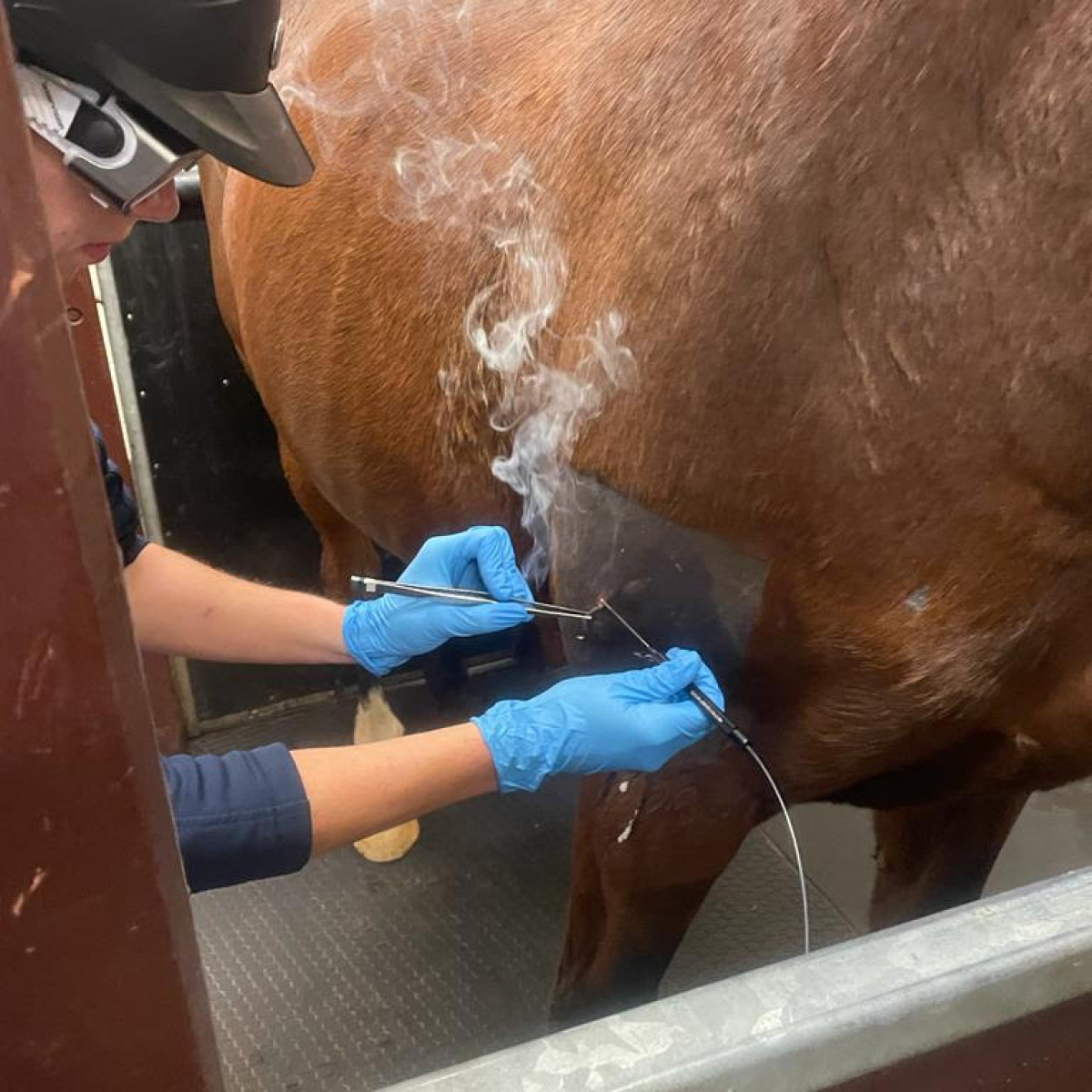Why Equine Therapy is Becoming a Preferred Alternative for Emotional Wellness
Why Equine Therapy is Becoming a Preferred Alternative for Emotional Wellness
Blog Article
Reviewing the Efficiency of Laser Therapy in Equine Therapy for Injury Rehabilitation
The examination of laser therapy's effectiveness in equine injury rehab pivots on multiple factors, consisting of recuperation time, pain reduction, and tissue regeneration. Vets often observe exceptional end results with laser therapy contrasted to conventional methods, placing it as an important component in equine treatment.
Recognizing Laser Treatment
Laser therapy has actually become a pivotal tool in vet medicine, especially in the treatment of equine conditions. Understood for its non-invasive nature and efficiency, laser treatment involves the application of certain wavelengths of light to boost tissue repair and minimize inflammation. This therapeutic technique is progressively favored for its capability to increase the recovery process in horses struggling with a selection of musculoskeletal injuries and persistent problems.
The primary mechanism behind laser treatment is its capacity to boost mobile features. When laser light permeates the skin, it is soaked up by mitochondria, the powerhouse of cells, which causes increased manufacturing of adenosine triphosphate (ATP) This biochemical power boost assists in cellular repair and regeneration. In addition, laser treatment advertises vasodilation, enhancing blood flow and oxygen shipment to broken cells, thus expediting healing.
In equine medicine, laser therapy is particularly beneficial for problems such as tendonitis, osteo arthritis, and wound healing. The technique is admired for its pain-relieving buildings, permitting horses to restore flexibility and feature much more quickly. Vets likewise appreciate its marginal side results contrasted to other therapy modalities, making it a reputable and safe choice for equine care.

Exactly How Laser Treatment Functions

Upon absorption, these photons activate a series of biochemical adjustments, boosting mitochondrial function and leading to boosted adenosine triphosphate (ATP) manufacturing. This rise in ATP accelerates cellular metabolism, promoting cells repair work and regrowth. Furthermore, laser treatment regulates inflammatory reactions by impacting cytokine degrees and reducing oxidative stress, thus alleviating discomfort and swelling.
One more substantial aspect of laser treatment is its role in boosting microcirculation. The treatment promotes vasodilation, enhancing blood circulation and oxygen distribution to broken tissues (Equine Therapy). This facilitates the elimination of cellular debris and supports the proliferation of fibroblasts and collagen synthesis, crucial for wound recovery
Professional Proof
The efficiency of laser treatment in equine treatment has been confirmed through various scientific researches, showcasing its therapeutic potential across a variety of conditions. Numerous controlled trials and observational researches have recorded significant improvements in tissue repair work, pain reduction, and overall rehab timelines. A research study performed by Turner et al. (2012) showed that horses treated with low-level laser therapy (LLLT) get redirected here for ligament injuries displayed sped up healing contrasted to those receiving standard treatments. The study highlighted a marked decrease in inflammation and boosted collagen development.
In a similar way, research study by Johnson and coworkers (2015) concentrated on equine muscle injuries, disclosing that laser treatment substantially quickened muscle mass fiber regrowth and minimized muscle tightness. These searchings for were proven by histological evaluations revealing better muscle mass tissue organization. Furthermore, medical assessments have actually shown that laser treatment can ease chronic problems such as osteo arthritis. A research study by Smith et al. (2018) reported that steeds with osteoarthritic joints experienced noteworthy pain relief and increased range of movement complying with a routine of laser treatment sessions.
Veterinarian Insights

Veterinarians also appreciate the flexibility of laser treatment. She aims out that laser therapy can be tailored to the details needs of each steed, you can try these out ensuring optimal outcomes.
In addition, veterinarians value the ability to integrate laser therapy with various other treatment modalities. This multimodal strategy can boost total therapy efficiency, providing a thorough remedy for equine recovery. Such recommendations from seasoned professionals highlight visit here the growing approval and application of laser therapy in equine medicine.
Practical Considerations
An essential facet of implementing laser therapy in equine therapy involves comprehending the useful considerations that guarantee its effectiveness and safety. It is vital to pick the proper laser gadget, as various kinds vary in wavelength, power, and penetration depth. Vets should be fluent in these parameters to customize therapy procedures efficiently to every injury kind
In addition, the regularity and duration of laser treatment sessions require careful planning to make the most of restorative advantages while lessening any kind of possible negative effects. Regular surveillance of the equine's response to therapy can direct needed modifications in the treatment regimen. Developing a safe and regulated setting during therapies is also vital to stop unintended exposure to laser exhausts, which can damage both the steed and the handler.
Educating and accreditation of personnel providing laser therapy are vital to guarantee proper method and to copyright safety standards. In addition, keeping accurate records of each session, including laser settings and observed end results, is vital for reviewing the general efficiency of the therapy and for making data-driven decisions.
Final Thought
Laser treatment has actually arised as an efficient modality in equine injury rehabilitation, using considerable benefits in recuperation time, pain alleviation, and cells healing. For optimum results, constant monitoring and customized therapy procedures stay necessary in leveraging the complete potential of laser treatment in equine care.
Report this page